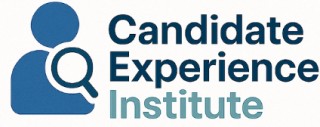
Understanding the Role of ATS in Candidate Experience
The Crucial Role of ATS in Elevating Candidate Experience
Applicant Tracking Systems (ATS) have become pivotal in shaping the recruitment process, focusing significantly on enhancing the candidate experience. These systems are crucial for organizing and managing large volumes of job applications efficiently. As companies strive to secure top talent, ATS tools streamline the hiring process by providing a structured approach to tracking applicants, scheduling interviews, and managing data.
A well-implemented ATS system not only aids the hiring team but also ensures a smoother journey for candidates. By minimizing the time involved in each step and making the recruitment process more transparent, these systems improve the overall experience for applicants. One notable feature commonly found in the best ATS software is user-friendliness, which ensures both applicants and hiring managers can navigate the system seamlessly.
With the right ATS, companies can significantly reduce the challenges faced in candidate management, resulting in higher satisfaction rates. Furthermore, many systems integrate with social media and job boards, broadening their reach to attract a diverse pool of candidates. However, it's essential to acknowledge potential challenges in implementation and maintenance, which can be explored further in some exemplary case studies of successful ATS integration.
The ever-evolving landscape of recruitment technologies suggests that ATS systems will continue to innovate, supporting enhanced candidate engagement and satisfaction in the future.
Key Features of Leading ATS Systems
Unpacking Essential Attributes of ATS Solutions
When examining top applicant tracking systems, it is crucial to identify the key features that enhance the candidate experience. These elements not only streamline the recruitment process but also play a significant role in attracting and engaging top talent. Let's delve into the must-have features that define leading ATS solutions.
- User-Friendly Interface: An intuitive and accessible interface ensures a seamless experience for both hiring managers and candidates. This feature is crucial as it minimizes the learning curve and empowers users to efficiently navigate the software, thus enhancing productivity.
- Resume Parsing: Automating the process of extracting and organizing candidate information from resumes saves considerable time and reduces manual errors. This feature allows recruitment teams to focus more on evaluating talent rather than administrative tasks.
- Interview Scheduling: Simplified scheduling tools that sync with calendars help coordinate interviews with ease. These tools enable hiring teams to efficiently handle interview logistics, ensuring a smoother process for candidates and recruiters alike.
- Integration with Job Boards and Social Media: The ability to post job openings across multiple platforms is essential for reaching a broader audience. An ATS that integrates with various job boards and social media channels expands a company's talent pool.
- Candidate Communication: Effective communication features, such as automated emails and notifications, keep candidates informed throughout the recruitment process. This transparency fosters a positive experience and solidifies a company’s reputation.
- Customizable Scorecards: To aid in making informed hiring decisions, customizable scorecards allow hiring managers to evaluate candidates based on predefined criteria. This functionality ensures that critical competencies are consistently assessed across all applicants.
- Data-Driven Analytics: Robust reporting and analytics provide valuable insights into the recruitment process, helping identify bottlenecks and optimize the hiring pipeline. Through data-driven decision-making, companies can continually refine their talent acquisition strategies.
Implementing these features can significantly improve the quality of the candidate experience and enhance the overall efficiency of the recruiting process. For organizations looking to deepen their understanding of ATS functionalities, mastering candidate database management is crucial. Learn more about optimizing this aspect with 25 essential tips for mastering candidate database management with Bullhorn.
Evaluating the Best ATS Systems on the Market
Assessing Prominent ATS Solutions for Recruitment Success
Selecting the best applicant tracking systems (ATS) is crucial for companies aiming to streamline their recruitment process and enhance candidate experience. The market offers a variety of options, each equipped with a range of features tailored to meet specific hiring needs. Evaluating these systems allows businesses to align their talent acquisition strategy with the right tools. When considering an ATS, companies should analyze several key factors:- User-Friendly Interface: A system that offers an intuitive and user-friendly experience is vital. This not only facilitates a smoother process for hiring managers and the recruitment team but also ensures a positive experience for candidates. An accessible ATS can enhance communication and reduce time spent on training.
- Integration with Job Boards and Social Media: Efficient systems integrate seamlessly with popular job boards and social media platforms, expanding the reach to potential talent pools. This connectivity simplifies the recruiting process by automatically posting jobs and collecting applications from various sources.
- Interview Scheduling and Scorecard Tools: Advanced features such as interview scheduling capabilities and customizable scorecards are invaluable. These tools assist hiring teams in organizing interviews and consistently evaluating candidates, thus saving time and mitigating bias.
- Customizable Recruitment Process: The best ATS platforms offer flexibility, allowing companies to tailor the recruitment process according to their unique needs. This customization can address specific workflow requirements, providing companies with a competitive edge in attracting top talent.
- Robust Reporting and Analytics: Decision-making is enhanced when an ATS provides detailed analytics and reporting tools. These insights help in tracking the effectiveness of recruitment strategies and optimizing the hiring process over time.
Challenges in Implementing ATS for Candidate Experience
Overcoming Implementation Barriers
Implementing an applicant tracking system (ATS) to enhance the candidate experience undeniably brings valuable benefits. However, this process isn't without its challenges. The transition can pose a few hurdles, ranging from technological integration issues to user adaptability concerns.Smooth Transition from Old Systems
Firstly, companies often grapple with transitioning from existing legacy systems to new ATS platforms. Compatibility with existing recruitment and HR software is crucial to ensure a seamless transfer of data and functionality. To mitigate such challenges, organizations should conduct comprehensive audits of their current systems to identify integration touchpoints and potential conflict areas.User Training and Adaptation
ATS systems, with their myriad of features such as job boards integration, interview scheduling, and talent acquisition tracking, require adept user interaction to extract their full potential. A common hurdle in implementation is insufficient training for hiring managers and recruitment teams. Introducing a structured training program to ensure users are well-versed with the software can significantly enhance the transition process. This approach fosters a user-friendly environment, crucial for both the recruiting team's productivity and the overall candidate experience.Customization to Align with Company Needs
Every organization's recruitment process is unique; thus, another common challenge is customizing the ATS to align seamlessly with the company's specific needs. Without customization, certain features may become obsolete or underutilized. This misalignment may lead to underwhelming results in enhancing the candidate journey. To address this, collaborating closely with ATS providers can help companies optimize the software functionalities to match their recruitment strategies effectively.Ensuring Consistent Quality across Platforms
In the digital age, candidates expect a consistent experience whether they are engaging through a company's careers page, social media, or other platforms. Maintaining a consistent quality of experience across these channels requires a robust ATS capable of integrating with various systems without compromising on functionality or speed. The path to leveraging ATS systems effectively for a better candidate experience is laden with these challenges, yet with strategic planning and execution, organizations can transform these obstacles into facilitative steps toward a more streamlined and efficient recruitment process.Case Studies: Success Stories with ATS Implementation
Real-World Success with Integration of Applicant Tracking Systems
The integration of Applicant Tracking Systems (ATS) into the hiring and recruitment processes has proven to be a game changer for companies striving to enhance their candidate experience. Looking at various success stories, we find valuable insights into how well-implemented ATS tools can streamline recruiting efforts while ensuring candidates have a positive journey from application to onboarding. One successful example is a mid-sized company that faced challenges in talent acquisition due to outdated and fragmented recruitment systems. This company switched to a modern ATS software that connected seamlessly with job boards and social media platforms. The result was a significant improvement in their recruitment process efficiency. The system’s user-friendly interface allowed the hiring team to easily manage and track applicant data, schedule interviews, and even communicate promptly with candidates. Another notable case involves a global organization that leveraged ATS features for better scalability. They were able to integrate automated interview scheduling and gather comprehensive talent data, which enabled them to assess candidates more thoroughly. Features such as scorecard downloads and user tailoring allowed hiring managers to swiftly navigate through large applicant pools, shortening the time-to-hire and enhancing candidate experience throughout the selection process. These real-world implementations underscore the importance of choosing the best applicant tracking systems based on company-specific needs. A system that is user-centric and incorporates tools that align with the company’s workflow paves the path for both recruitment success and enriched candidate experiences. Whether it's a system from Zoho Recruit or other leading providers, the adaptability and functionality of the tracking system are crucial in overcoming recruitment challenges and emerging as leaders in talent acquisition.Future Trends in ATS and Candidate Experience
Emerging Trends Transforming Hiring Processes and ATS
As recruitment technology advances, the landscape of applicant tracking systems (ATS) is also evolving. By recognizing these emerging trends, companies can adapt their strategies to enhance the candidate experience and streamline their hiring process.- AI-Powered Screening and Shortlisting: The incorporation of AI in ATS systems is revolutionizing the recruitment process. AI can efficiently filter applications, analyze resumes for key features, and identify the best candidates, allowing hiring teams to focus on skilled individuals quickly and accurately.
- Enhanced User Experience: As user-friendly interfaces become more common, both applicants and recruiters benefit. Such interfaces make it easier for candidates to apply through various job boards and social media platforms, while recruiting tools allow hiring managers to track progress in real time.
- Integration with Social Media: Integrating social media into recruiting processes not only broadens the talent pool but also facilitates a more dynamic engagement between companies and potential hires. This trend helps applicants feel more connected and informed throughout the recruitment process.
- Data-Driven Decision Making: ATS platforms are increasingly utilizing data analytics to provide insights into recruitment and hiring patterns. This helps companies make evidence-based decisions, optimizing their talent acquisition strategies and improving candidate satisfaction.
- Mobile Optimization: With candidates increasingly accessing job opportunities from mobile devices, ATS systems now prioritize mobile optimization. This trend ensures that the application process is accessible and convenient, improving the overall candidate experience.
- Integration with Broader HR Software: Synergies between ATS software and other HR systems, such as performance management and interview scheduling tools, streamline workflows and provide a seamless experience for all stakeholders involved.











